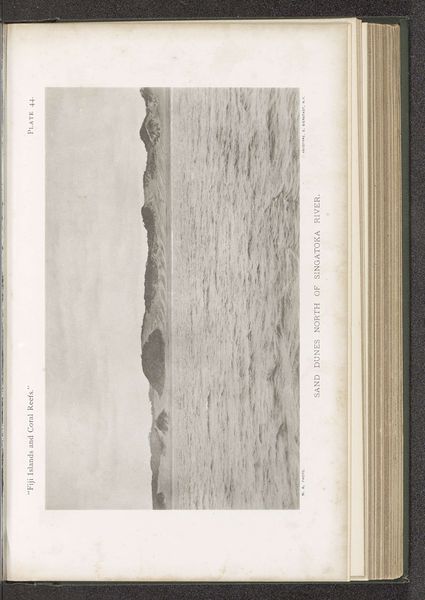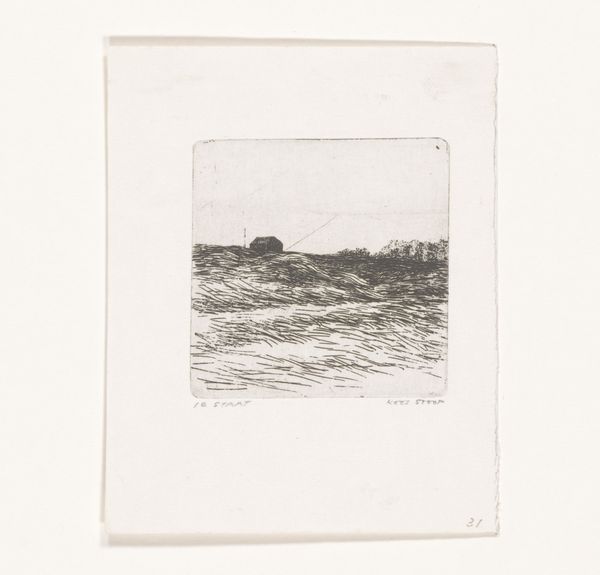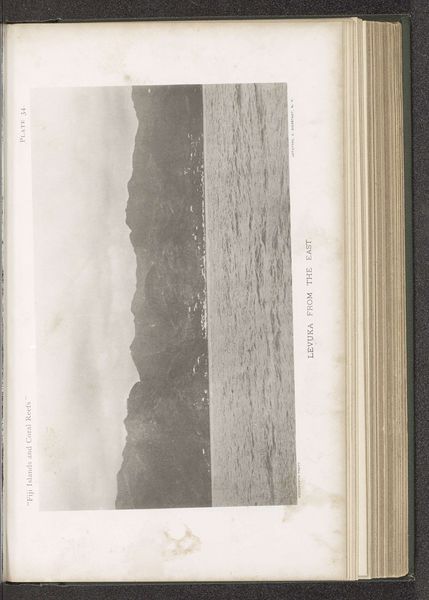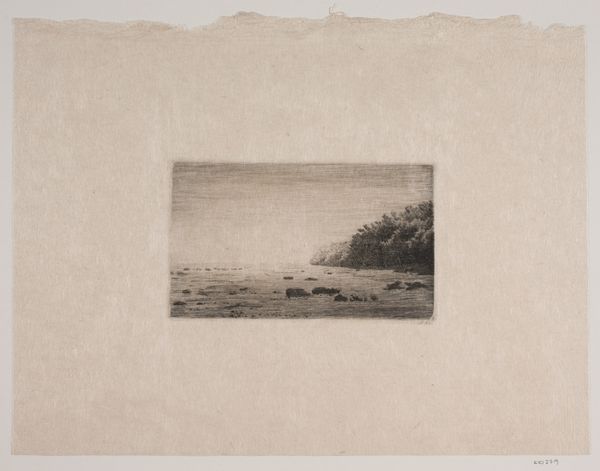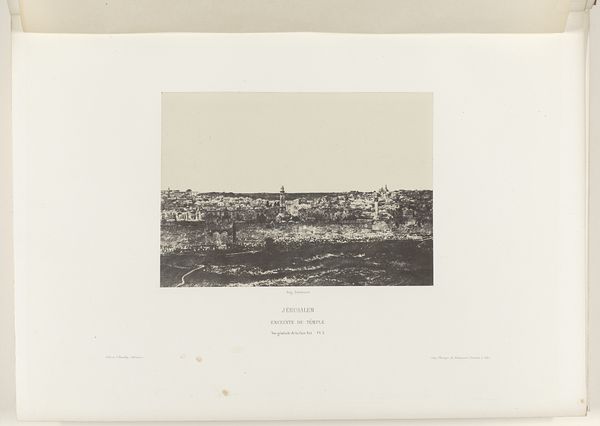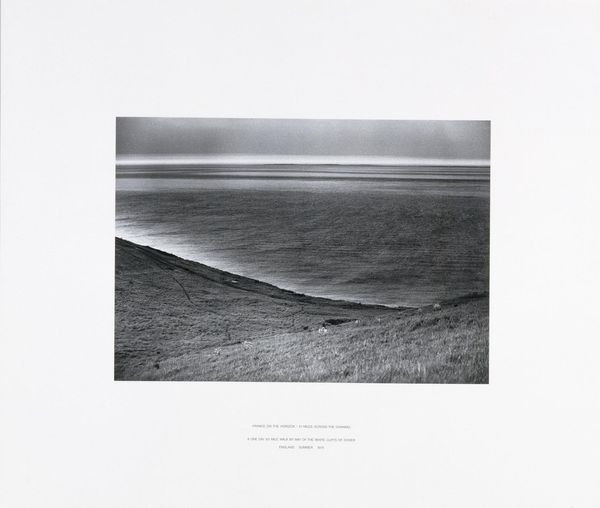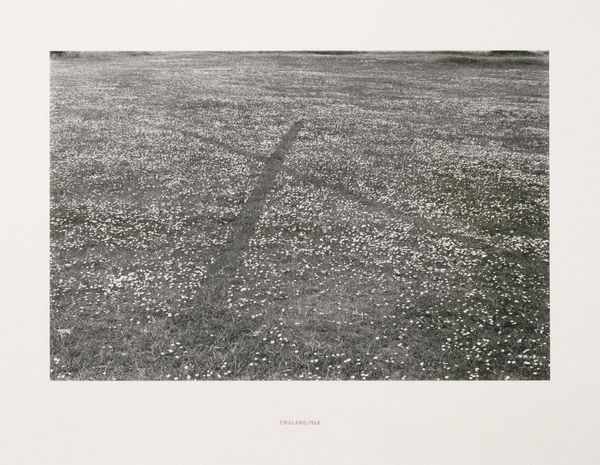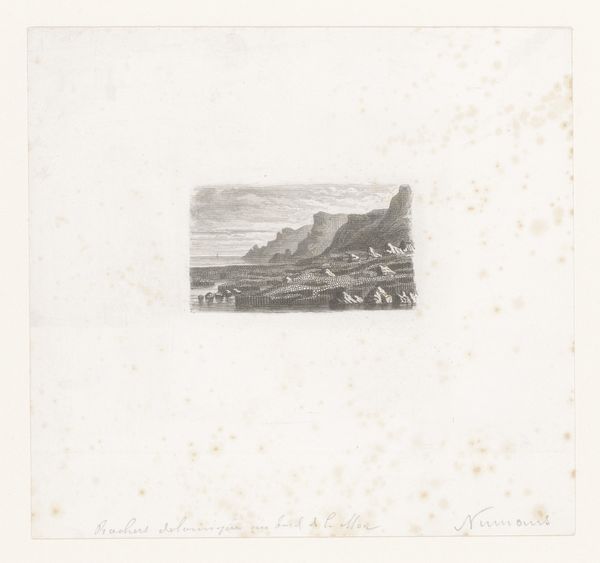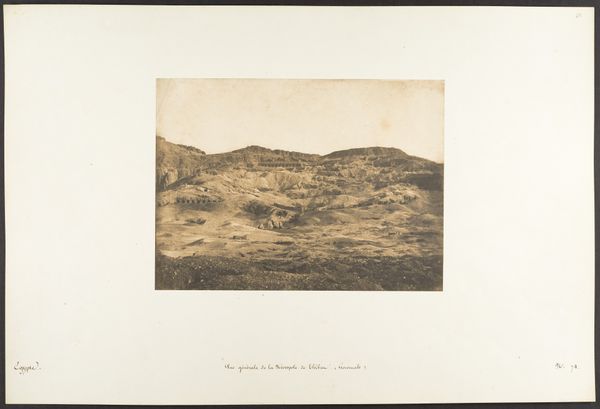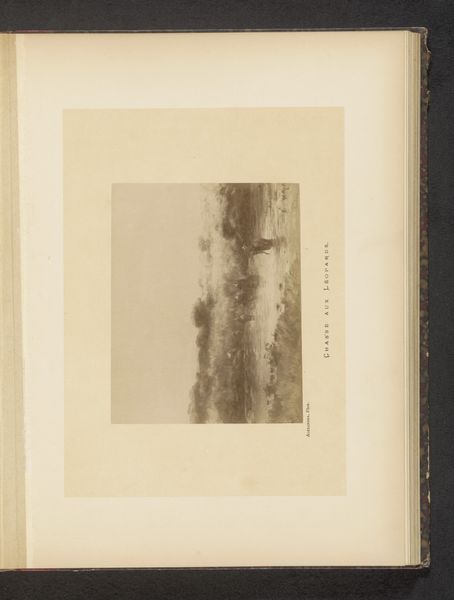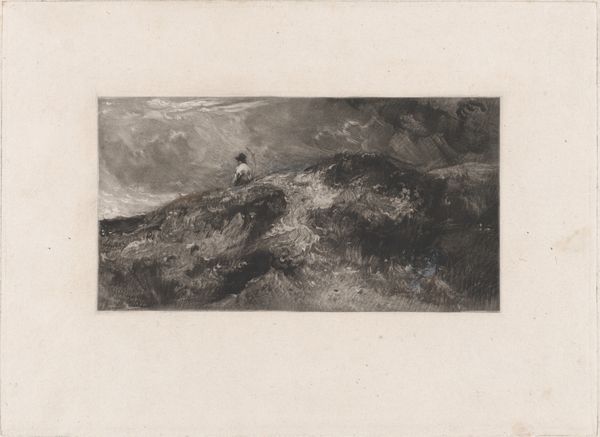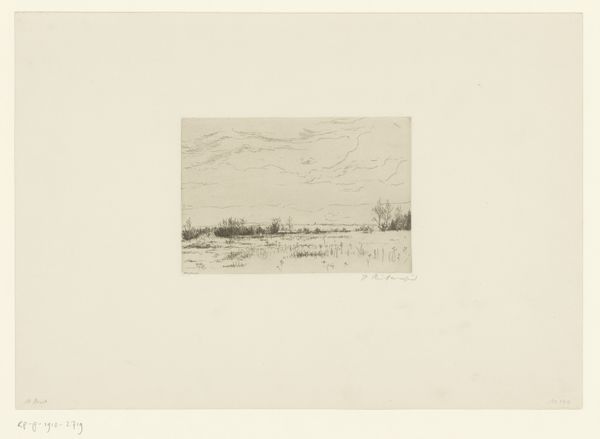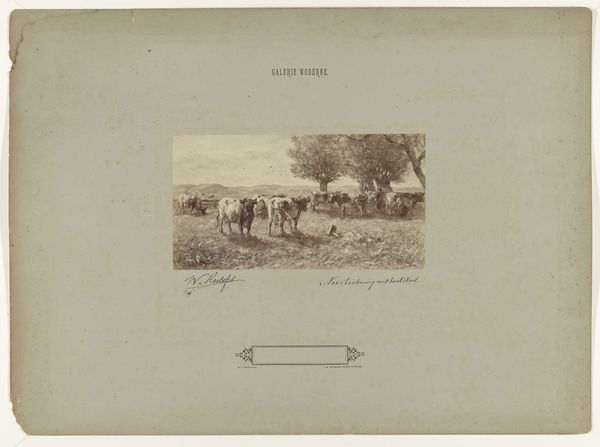
daguerreotype, photography
#
landscape
#
daguerreotype
#
photography
#
pencil drawing
#
romanticism
#
realism
Dimensions: Image: 4 13/16 × 8 1/2 in. (12.3 × 21.6 cm) Mount: 12 5/16 × 18 11/16 in. (31.2 × 47.5 cm)
Copyright: Public Domain
Maxime Du Camp captured this image, "Vue des rapides de la Seconde Cataracte," using photography, a relatively new medium at the time. Notice the photograph's structure: a vast expanse of water and rugged rocks dominates the foreground, leading to a distant horizon. The composition invites us to explore the relationship between the solid, unyielding forms of the rocks and the fluid, ever-changing nature of the water. Light plays a crucial role, casting shadows that accentuate the textures and contours of the landscape. Du Camp's use of photography reflects broader 19th-century concerns about objectivity and representation. The photograph captures a specific place and moment, yet it also invites us to consider the power dynamics inherent in the act of seeing and documenting. Does it challenge fixed meanings or engage with new ways of thinking about space, perception, power or representation? Consider how the formal qualities of this photograph function not just aesthetically but also as part of a larger cultural and philosophical discourse about the nature of reality and representation.
Comments
No comments
Be the first to comment and join the conversation on the ultimate creative platform.
